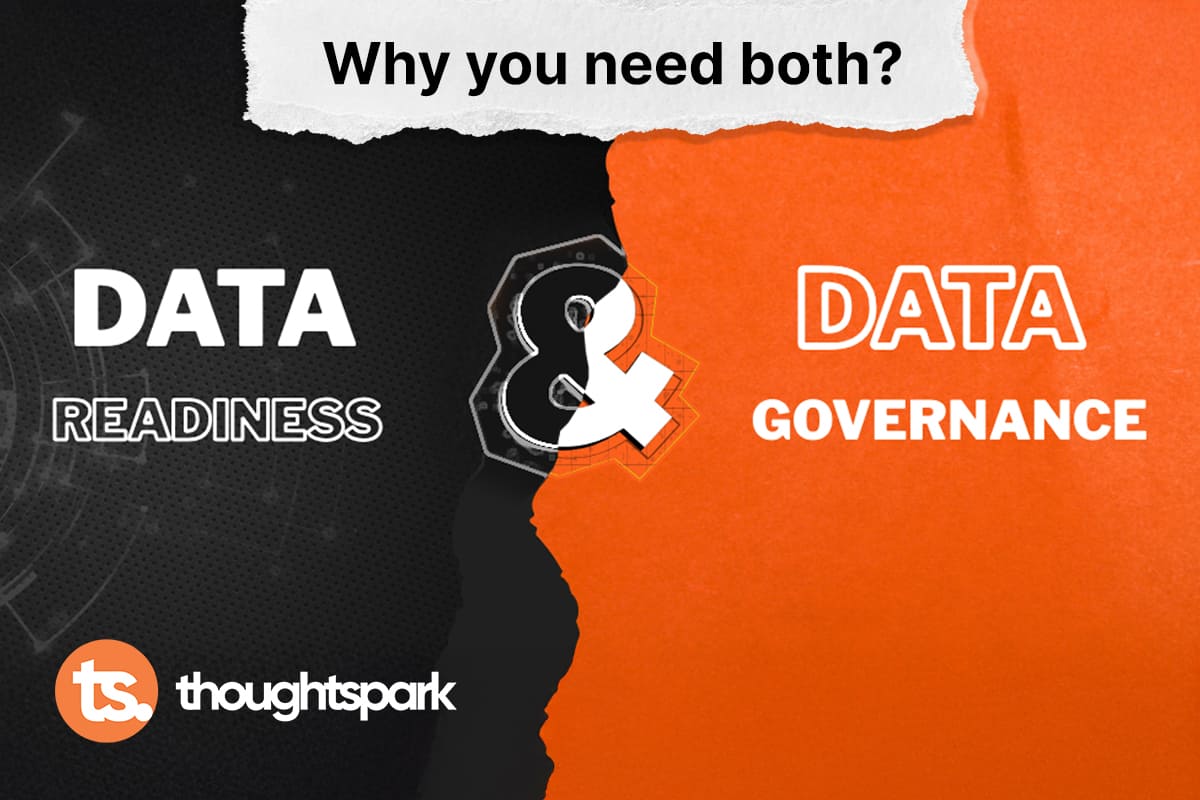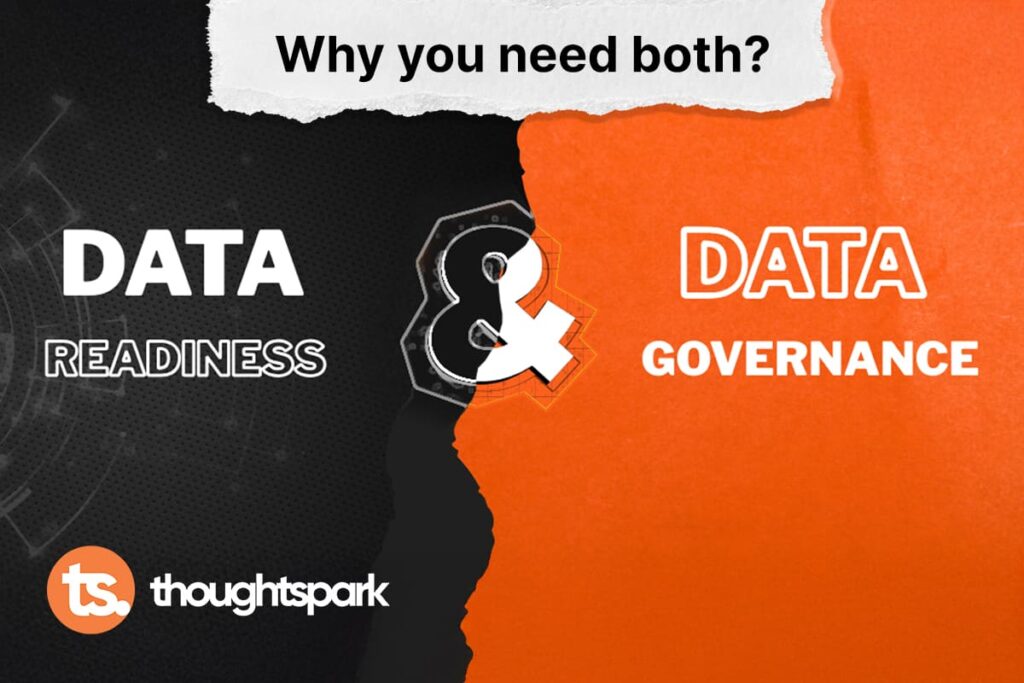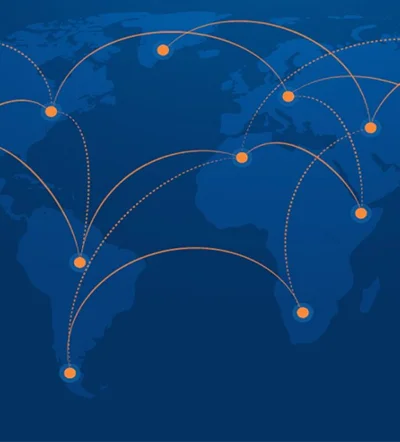

You've capitalised on the latest data tools and hired the right professionals. Now, you're capable of capturing more data than ever before. However, when the right moment comes to utilise that data, for a customer dashboard, a regulatory report, or even an AI model, it's either unavailable, inconsistent, or incomplete. Sounds familiar?
That disconnect is often responsible for creating a misunderstanding of two vital but entirely different concepts: data readiness and data governance. Many organisations confuse these two, assuming that governing data automatically makes it usable or that preparing data for a project means it's being properly governed. However, the fact is that if your data is neither ready nor governed, it'll fail to deliver meaningful outcomes.
Come along as we break down each term by explaining what is data readiness, where it contrasts with governance, how the two connect, and, most importantly, why you need both to unlock the power of your data. Let’s get into it.
What is Data Readiness?
Data readiness is all about usability. In brief, it's the degree to which your data is transparent, structured, and ready for a specific purpose, whether that's running a report, training a machine learning model, or developing a customer-facing dashboard.
Data readiness assessment is a great way for organizations to determine how prepared their data is for immediate use. This is especially crucial when dealing with modern initiatives like data readiness for AI, where poor data quality can completely derail your efforts.
You can consider data readiness as the "fitness" of your data that measures how ready your data is to perform under pressure. Just like a marathon runner wouldn't show up on race day without training, you also shouldn't expect that your data would deliver insights without being properly ready.
A typical data readiness framework accounts for several dimensions:
- Data Quality: Is the data precise and consistent? Are there any duplicates, missing values, or obsolete fields?
- Timeliness & Availability: Is the data updated and accessible whenever required?
- Relevance: Is the data helpful for the issue you're aiming to solve?
For instance, imagine you're introducing a predictive analytics initiative. If your required data is buried across outdated spreadsheets, scattered databases, or stored in different formats with no standardisation, your team will need more time sorting and aligning data than doing actual analysis. This indicates that your data isn't ready.
A typical data readiness framework looks at several dimensions: A data readiness checklist can help keep this process in check, providing a step-by-step method to review whether your data is fit for purpose.
What is Data Governance?
While data readiness is all about making data operational, data governance aims for authority and liability.
Data governance ideally indicates the set of guidelines, tools, roles, and methods you put together to manage data responsibly across your business. It guarantees your data security, compliance, and consistency, regardless of who's handling it or where it's stored.
Significant factors of a good governance framework include:
- Metadata management: Keeping track of where your data lives, what it indicates, and how it's connected.
- Data stewardship: Assigning ownership to ensure consistency and accountability.
- Compliance & Privacy: Meeting legal standards such as HIPAA, GDPR, or your industry-based requirements.
- Access Control: Signifying who has access to which data and under what environments.
Governance not only protects your organisation from threats but also creates reliability in your data. If people lack trust in the numbers, they won't use them. And if regulators come knocking, you must be aware of how exactly your data is handled.
So, while data readiness is all about "Can we use this?" data governance is about "Should we use this - and are we using it properly?"
Key Differences Between Data Readiness and Data Governance
Although the two concepts are closely linked, they serve very different purposes. Here are some of the most important ways they differ:
| Aspect | Data Readiness | Data Governance |
| Purpose | Prepares data for immediate business use | Ensures data is managed responsibly and securely |
| Primary Focus | Usability, accessibility, and quality | Policies, compliance, and accountability |
| End Goal | Make data usable for analysis, AI, reporting, etc. | Make data trustworthy, compliant, and protected |
| Ownership | Data engineers, analysts, data scientists | Data stewards, compliance teams, Chief Data Officers (CDOs) |
| Common Tools | ETL pipelines, data wrangling tools, quality profilers | Data catalogues, policy engines, lineage and access control tools |
| Measurement Criteria | Accuracy, completeness, timeliness, relevance | Adherence to policies, access logs, audit trails |
| Timeframe | Often tied to specific projects or use cases | Ongoing and continuous across the organisation |
| Risk of Ignoring | Ineffective models, misleading insights, wasted effort | Data breaches, regulatory penalties, loss of trust |
| Position in Lifecycle | Closer to data consumption and use | Present throughout the data lifecycle from creation to retirement |
| Dependency | Relies on governance for consistent inputs | Enables readiness by enforcing standards and structure |
Here’s how Data Readiness and Data Governance Work Together
Think of data governance as the guideline and data readiness as the strategy. Governance establishes the foundation, including clear roles, security access, and consistent quality standards. Readiness develops that foundation to get the data in shape for action.
For instance, a well-governed data pool including precisely catalogued, tagged, and secured datasets makes it seamless to prepare data for a new AI project. You're now starting from scratch, but you're aware of where the data is, what it means, and who owns it.
One practical suggestion: while designing your governance policies, bake in readiness goals. Motivate your team to tag data with usage context and define what "ready" means for different use cases and departments. In this way, you're not governing for control but for usability.
Common Drawbacks When You Confuse the Two
Unfortunately, it’s easy to mix these concepts up, but that can result in costly mistakes.
- Mistaking Governance for Readiness
Some organisations make huge investments in data governance tools and think their data is usable. However, while you might have great documentation with firm access guidelines, the actual data could still be obsolete, inconsistent, or incomplete.
So, basically, you have created a secure environment for bad data.
- Mistaking Readiness for Governance
On the other hand, focusing only on readiness, for instance, cleaning data for a dashboard without any oversight can also bring negative outputs. Of course, the dashboard is accessible now. But what happens when the next team uses that same data without understanding the way it was prepared?
Without governance, there’s no accountability or consistency, which ends up making your data strategy short-sighted and fragile.
Best Practices to Balance Both
Getting the right balance between data readiness and data governance is not only possible but also mandatory. Here’s how you can start:
- Appoint cross-functional data teams
Don’t let governance get stuck with IT or compliance. Include engineers, analysts, and business users in your workforce to ensure both readiness and governance are aligned.
- Align governance frameworks to business goals
If your governance policies don’t comply with real-world use cases, people will ignore them. Make sure they support your business needs, such as improving time-to-insight or launching a new product.
- Use readiness assessments in governance reviews
Evaluate how “ready” your data is as part of your regular governance checkpoints. This helps connect long-term governance with short-term usability.
- Invest in integrated tooling
Select platforms that bring governance and readiness to a place, such as data catalogues with built-in quality scores or lineage tools that track transformations for transparency.
- Train stakeholders to understand both
Education is key. Help your teams understand the difference between readiness and governance, their importance, and how they work together to create real value.
Conclusion
Data readiness and data governance aren't interchangeable, as they serve different purposes, involve different stakeholders, and depend on different tools. However, they are deeply interconnected when everything is perfectly done.
If you aim only for data governance, you risk developing systems that are compliant but useless. On the other hand, if you aim only for data readiness, you may achieve quick success but fall apart over time.
You need both to truly unlock the potential of your data. One ensures the usability of your data, while the other ensures credibility.
So, ask yourself: Is your data truly ready and well-governed? If not, it's high time to act because your next strategic project will rely on it.
